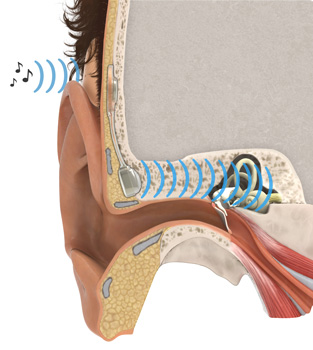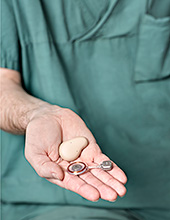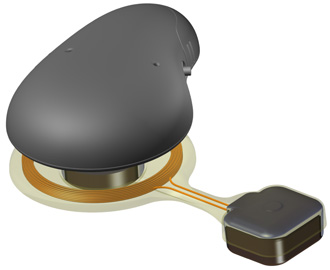Bone Conduction Hearing Aid Implant

Despite what many people might think, hearing loss can come in a variety of different ways. Having a hearing aid that just makes everything louder is not the answer for everyone. The ear has many working parts and different solutions are needed when different parts don’t work. For those who have a working inner ear but damaged middle or outer ear, a new hearing aid implant is in the works. The Bone Conduction Implant (BCI) is a bone conduction hearing aid by Chalmers University of Technology in Sweden that conducts sound through the skull to the inner ear.
The Bones
While other bone conduction hearing aids already exist, BCI differs in the fact that there is no screws that pierce through the skin. Instead there is a small less than 6cm length implant that is placed behind the ear and into the bone. A sound processor is then placed on the outside with magnets. Here’s a brief description by Chalmers on how the system works:
… an inductive link that transmits sound from the patient’s surroundings through the intact skin to an internal receiver. The audio signal is transmitted to a tiny quadratic loudspeaker anchored to the bone near the auditory canal. The speaker generates sound vibrations which reach the sensory organs of the cochlea.

Image: Chalmers
Who It’s For
Again BCI is not for every type of hearing loss and Chalmers says it is intended for “individuals who have been affected by chronic inflammation of the outer or middle ear, or bone disease, or who have congenital malformations of the outer ear, auditory canal or middle ear.”

Conclusion
Right now BCI is undergoing clinical trails so it’ll be awhile before it becomes available to the public. But the potential seems to be there and lead researcher Professor Bo Håkansson touts the potential advantages, “The implant will be very comfortable and aesthetically attractive. Because the implant is securely fixed under the skin, the patient won’t need to be more careful than other people during, for example, outdoor activities and water sports.” For more information on BCI visit this link.
